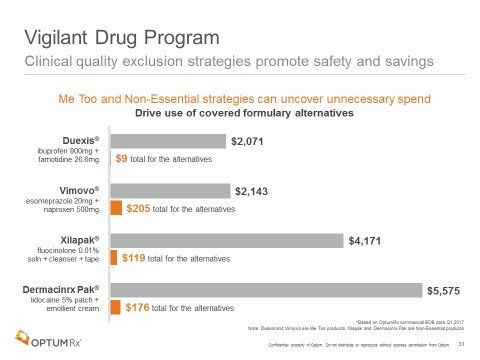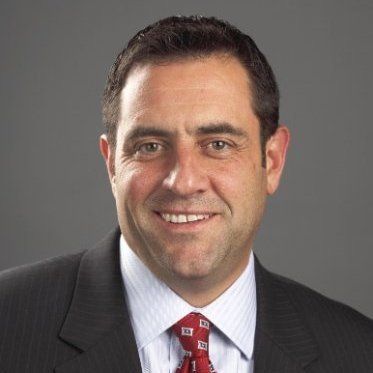Opinion: Time to Manage ‘Clinically Superfluous’ Drug Products to Control Costs
PBMs are in a unique position to leverage three critical tools to protect patients from unnecessary healthcare costs.
One of the greatest healthcare issues we face in the United States is the cost of prescription medications. Too often, medications are priced at a point that places an undue financial burden on patients, who are left with few-or no-care alternatives, and on payers, who must find ways to continue to cover the rising costs of prescription drug coverage for their members.
Each year, the FDA approves an average of 40 to 50 new drug therapy products to enter the market, including a combination of traditional drug products, specialty agents, and more recently, several products for rare orphan diseases. As these products make their way to market, PBMs and managed health providers have developed a proven means of monitoring their entry and quickly evaluating their clinical merits to determine formulary placement and any required utilization management protocols.
However, what many may fail to realize is that beyond these 40 or 50 new molecular entities approved by the FDA each year, hundreds of other non-unique and often higher-cost prescription drug products also make their way to the market every week-some piggybacking off prior FDA approvals and some bypassing proper FDA-approval pathways altogether. These products include a range of what industry experts would consider ‘clinically superfluous’ brands, which offer little to no added clinical value over currently available therapeutic options, many of which are often available in generic or even over-the-counter (OTC) form.
It is often smaller, niche pharmaceutical companies contributing to this issue through routine launch and aggressive promotion of these smaller-market branded medications that offer little, if any, added diversification. These medications most frequently appear as costly reformulations of existing generic products; as “me-too” branded therapies that offer little incremental value over lower cost alternatives in the same drug class; and/or as repackaged versions of previously approved treatments lacking supporting clinical evidence, yet still citing claims of therapeutic benefit.
National disparity
This national disparity has made headlines in past years. One recent example that shocked the nation is Vimovo, a nonsteroidal anti-inflammatory drug that skyrocketed to a wholesale price of $2,979 per bottle in 2018, 22 times more than it had cost in 2013. Vimovo is comprised of two highly accessible and inexpensive OTC medications-naproxen (Aleve) and esomeprazole (Nexium)-that can be independently purchased for a combined cost of approximately $36. Another is the pain reliever Duexis, a combination of two dated, although widely accepted generic products: ibuprofen (Advil/Motrin) and famotidine (Pepcid). If prescribed separately, the two drugs together cost no more than $10 to $20 a month. By contrast, Duexis, which contains both in a single pill, costs about $2,000 a month.
Another particularly alarming therapeutic area where the entry of high-cost, clinically superfluous products is rampant is topical pain medications and other dermatology products. Many of these drugs are categorized into what is known as “convenience kits.” These kits most often contain a combination of low-cost, off-patent creams, ointments and solutions, repackaged with other OTC supplies like bandages and cleansers, and then marketed to providers and billed to insurers and government programs as patented, brand-name prescription products. Examples of convenience kits include Dermacinrx Pak, a patch containing the 70+-year-old analgesic lidocaine (the same ingredient in the OTC product Aspercreme), along with an emollient cream, where an average prescription cost exceeds $5,500. Its alternatives, obtained separately, would cost a payer less than $200. The topical skin rash treatment Xilapak, which combines the several-decades-old steroid product fluocinolone (available generically via prescription) with an OTC cleanser (Cetaphil) and silicone tape has an average prescription cost exceeding $4,100. In this instance, the generic components obtained separately via prescription (generic fluocinolone solution) and OTC (cleanser and tape) would cost a payer just over more than $100.
Me-Too and Non-Essential Drug Costs in Comparison to Alternative Medications*

*Average ingredient costs based on OptumRx commercial book-of-business data, Q1 2017
PBMs are uniquely positioned to remedy this issue because they sit at the intersection of drug manufacturers, pharmacies, and healthcare providers. PBMs touch nearly every part of the health system and are on the frontlines of the drug price debate. In the interest of clinical and fiduciary accountability, these organizations have a key responsibility to deploy proactive, comprehensive monitoring and intervention strategies to keep drugs affordable and protect clients from undue financial exposure. PBMs that provide unimpeded coverage for these medications can be viewed as performing a major disservice to the clients and members they serve. Such lax practices may be driven by administrative complacency or the promise of extensive rebate offerings by drug manufacturers; however, it must be noted that such rebates will not offset the vast cost differential between these superfluous brands and their generic and OTC alternatives.
Drug surveillance
Advancements in new drug surveillance activity and the deployment of more proactive drug benefit, and formulary exclusions are critical tools that every PBM should leverage to protect clients and patients from unnecessary healthcare costs.
Next: Tools to consider
At OptumRx, a Clinical Affairs team has developed what it refers to as its Vigilant Drug Program to accomplish this objective. This voluntary program consists of weekly lists of new products entering the market that OptumRx has carefully vetted, with oversight from an independent Pharmacy and Therapeutics Committee, to identify superfluous drugs. These lists are currently comprised of hundreds of unique national drug codes (NDCs), like the ones previously described. For clients adopting this program, these “me-too” drugs are immediately restricted from coverage at the outset of their introduction to market, protecting clients and members from financial burden, potential safety risks and future formulary disruption.
Today, a large majority of OptumRx’s client base has adopted this program as another key means of managing the rising cost of prescription drugs. On average, the deployment of the Vigilant Drug Program has saved clients an average of 2% to 4% on overall drug spend. OptumRx is expanding the program with new lists that clients can choose from to protect against other market dynamics that place upward pressures on drug trend, including high-priced generics with equally safe and effective lower-cost alternatives; branded prescription drugs with widely available OTC equivalents; and multisource brands with interchangeable prescription generics.
Though the number of product exclusions from formularies has grown at a rate of about 15% to 20% per quarter in just two years, many of these aforementioned products are not necessarily being included in these exclusion lists. Additionally, it is highly unlikely that pharmaceutical companies who have benefited from them will halt the production of these clinically exorbitant drugs or the aggressive marketing tactics that go with them. As such, PBMs can, and must, provide a necessary counterweight to these activities by implementing programs that ensure a formulary offering that delivers the greatest possible health outcomes at the lowest cost to both clients and members. Such programming, when effectively developed, not only holds manufacturers accountable, but helps to set a consistent industry standard for effective drug monitoring and prescription cost trend management.

David Calabrese, RPh, MHP, is senior vice president and chief pharmacy officer of OptumRx. He also is an editorial advisor for Managed Healthcare Executive.
David Calabrese of OptumRx Talks New Role, Market Insulin Prices and Other Topics 'On His Mind'
April 13th 2023In this month’s episode of the "What's On Your Mind podcast," Peter Wehrwein, managing editor of MHE connects with the now Chief Clinical Officer of OptumRx Integrated Pharmacies, David Calabrese. In this conversation, David touches on his transition in January as OptumRx’s former chief pharmacy officer and market president of health plans and PBMs to his new role as Chief Clinical Officer where he now focuses more on things such as specialty pharmacy to home delivery — with an overall goal of creating whole-patient care. Throughout the conversation, Calabrese also touched on the market’s hot topic of insulin prices and behavioral health services within the OptumRx community, among other topics.
Listen
Briana Contreras, editor of Managed Healthcare Executive, spoke with Nancy Lurker, CEO and president of EyePoint Pharmaceuticals. Nancy shared a bit about EyePoint and how the organization’s innovative therapies are addressing patient needs through eye care, and most importantly, she addressed C-Suite positions like the CEO role. Nancy shared advice for those seeking to reach the CEO level, especially toward women in healthcare and other roles, and what it takes to run a biopharma company.
Listen